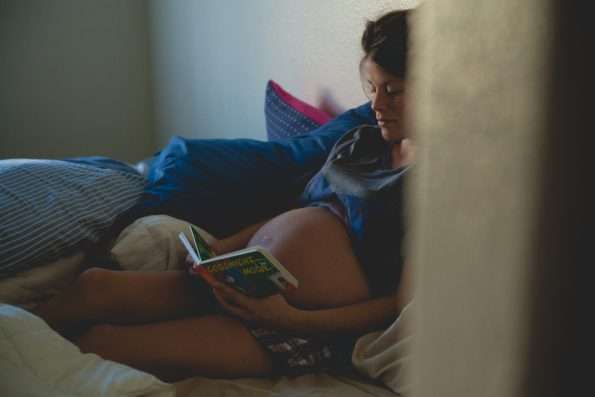[dropcap]I[/dropcap]n the world of birth control, people have been using birth control products for over 100 years. Nowadays, 1 in 5 teenage girls, ranging from 13 to 18 in age, are on the birth control pill. Most are not sexually active but use the contraceptive for other personal reasons concerning their periods or effects of the menstrual cycle. In 2011- 2013 the CDC found that around 62% of the 60.9 million people from the 15-44 age bracket use a form of contraceptive. As the age of the women gets older, most will be or have used a form of birth control to help with family planning. The use of birth control and family planning can be used to your advantage in life.
History
Throughout many years, birth control has changed and keeps changing by adding new methods and reasons for its use. The beginning of birth control use was for family planning to help avoid unplanned pregnancies. In the 1900’s, the intrauterine device or IUD was invented. It is a circular plastic implant, which now has changed to more of a T-shape, that is professionally inserted into a woman’s uterus. Its use is

to disrupt the movement of the sperm and keep the egg from getting fertilized. There are different kinds of IUDs and some can even help balance hormones. The IUD, however isn’t the only option around.
During the late 1950’s, the first birth control pill was introduced. This form of birth control can prescribed for more than just family planning. The pill has hormones that can reduce cramps, acne and stabilize periods. A women takes it once a day, everyday at the same time to make sure the hormones work effectively. The pill was very popular in the early days but then declined because of the side effects it caused. Nowadays, there are many different options but not all do the exact same thing or are as effective as another.
Why it’s thought to be wrong
[perfectpullquote align=”right” bordertop=”false” cite=”” link=”” color=”” class=”” size=””]The Catholic Church, for one, thought that contraception was sinful and unnatural.[/perfectpullquote]
In the early introduction of birth control, not everyone was for the product nor is everyone now. The Catholic Church, for one, thought that contraception was sinful and unnatural. It is unnatural because god had made humans to be able to procreate and not for simple pleasure. While having sex in marriage and trying to have kid was not thought to be a sin, pleasure in it was. By stopping your ability to have kids, while still having sex just for pleasure, was going against “natural law,” along with it being a sin. Although some people still think birth control to be no good, the Catholic Churches don’t hate is so much in today’s world and now talk about the use on birth control.
Uses of Birth Control
When you think of birth control, you probably think about a women taking a pill or something else to prevent pregnancy, but birth control has many more uses than just prevention of kids. Some options produce hormones the help reduce or stop a women’s period and stop the effects that come with a women’s period.
The pill is the most common form of birth control used. Planned Parenthood claims that, “Both combination and progestin-only pills reduce menstrual cramps, lighten periods and lower your risk of ectopic pregnancy.” The pill can

help reduce or prevent acne, bone thinning, cysts in breasts and ovaries, endometrial and ovarian cancers, and a few others. This method is chosen by a lot of adults because “you can get pregnant right after you stop taking it” as explained by Planned Parenthood. If you are not good at remembering to take prescriptions or your pill, there are other options that may work better for you.
Another popular method, is the IUD device. It is “one of the most effective methods” of birth control out there, explains Planned Parenthood. There are primarily 2 types of IUD devices, hormonal and copper. Hormonal IUDs can help lighten periods, lessen cramps and reduce the risk of becoming anemic. The Copper IUD, however, does not have hormones but still is very effective in preventing pregnancies. This device can last for around 3-12 years before needing a replacement or to be taken out. IUDs are great for those who do not want to get pregnant but also do not want to worry about taking anything to keep them safe.
Other birth control options would be the rod implant, the shot, the patch and a few other options. The rod implant is a small, match sized rod that is placed into your upper arm. This device produces hormones that keep you from getting pregnant and reduce or stop a women’s menstrual cycle. It is good to stay there for up to 5 year. Planned Parenthood suggests that the rod along with the IUD are pretty much the most effective forms of birth control. The shot is, as is suggests, a series of shots where hormones are put into your body so you have a less likely chance on getting pregnant. These injections happen every 3 months otherwise the birth control isn’t as effective in preventing pregnancy. It’s up to the women to schedule the appointments for these shots. The patch is, also as it applies, a patch you place on your belly, upper arm, butt, or back and replace weekly. It slowly releases hormones into the body to reduce the chance of pregnancy
Side Effects
[perfectpullquote align=”right” bordertop=”false” cite=”” link=”” color=”” class=”” size=””]Birth control products cannot do is protect you from STDs.[/perfectpullquote]
Birth control, like any medications, has side effects. One thing birth control products cannot do is protect you from STDs. STDs are an “infection transmitted through sexual contact, caused by bacteria, viruses, or parasites”(google.com) The only way to protect yourself from STDs is through abstinence or the use of a condom.
Hormonal birth control, such as the pill, can cause nausea, abdominal cramps, bloating, migraines, mental depression and others. These side effect usually last a few days or weeks but if they are for lasting months, you should probably consult your doctor.
Summary
Birth control is a personal choice is not a necessity but helps in so many ways. The protection from unplanned pregnancies is just the beginning. Hormonal birth control options are available to help with periods, acne, and effects that come with a menstrual cycle. Although there are side effects that can be harmful, birth control is a useful way for women to not become pregnant and help them with their menstrual cycle if need.
Featured Image by: pixabay.com
